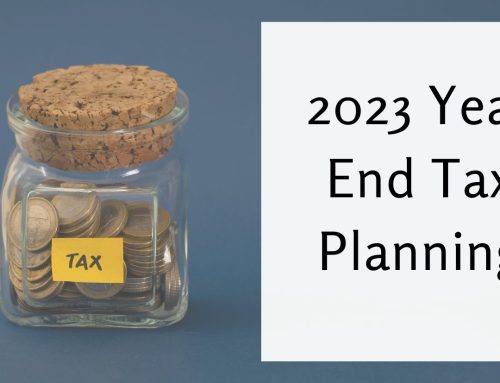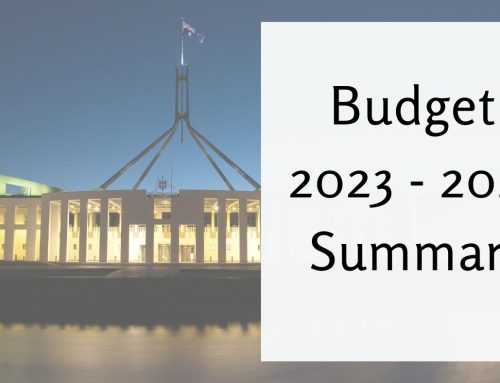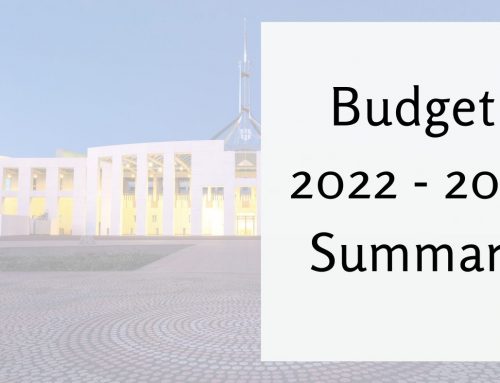1. Contribution Rules
Currently, if you are between 67 and 74 years of age your ability to make superannuation contributions is subject to you being able to satisfy the work test. The work test requires you to work, for reward, for 40 hours in a 30 day consecutive period.
With effect from 1 July 2022 persons aged 67 to 74 will be able to make non-concessional superannuation contributions without having to meet the work test. The ability to take advantage of these new rules will be dependent on your Total Super Balance (TSB). That is, if the total value of your superannuation benefits exceed an amount of $1.7m then you will not be able to make non-concessional contributions to any superannuation fund. The second constraint is the non-concessional superannuation contribution caps. At present the annual non-concessional cap is $110,000. However, subject to your Total Super Balance, you may be able to use the “Bring Forward” rule which allows you to make a contribution of between $110,001 and $330,000 in a single year.
This is a significant change to the superannuation contribution rules and will allow the following to happen for those aged between 67 and 74 (who would previously not have been able to meet the work test):
a. Non-Concessional Contributions
For those aged between 67 and 74, from the 1 July 2022 you will be able to make non-concessional contributions to your superannuation provided that you are under the Total Super Balance cap of $1.7m as at 30 June the previous tax year and you have not already fully utilised your annual non-concessional superannuation contribution cap for the year (unless you have unused bring forward contributions available).
This can be an important strategy for individuals and/or couples with savings or investments outside of superannuation and looking to minimise tax on income or looking to simplify their financial affairs by having the majority of their assets within a concessionally taxed environment.
b. Withdrawal and Re-Contribution Strategy
Your superannuation entitlements consist of one or more of the following components:
i. Tax Free component – when passed out of super to a partner or children, this component retains its tax free nature
ii. Taxable Component – the taxable component is broken down between a taxed element (being the amounts where the 15% contributions tax has already been paid) and an untaxed element (where tax has yet to be paid on this amount)
As mentioned above, on your passing the tax free component will be paid out to either a partner or your children tax free. In contrast, the taxable component will only be paid out tax free if paid to your spouse/partner or to a person who is considered to be financially dependent on you (and there is evidence to support that dependency). When the taxable component is paid to your children or grandchildren, they will be taxed on this amount at a rate of 15% if the amount has been classified as “Taxable – taxed element” or 30% if the amount has been classified as “Taxable – untaxed element”.
Many will have a large percentage of their superannuation entitlements classified as a Taxable – Taxed Element. Where the superannuation ends up in the hands of your children then this taxed element will be taxed at 15% in their hands. While we do not have a death tax in Australia, this could be considered to be a form of death tax.
You are able to look to minimise this taxable – taxed element through implementing a “Withdrawal and Re-Contribution Strategy”. This strategy simply involves you withdrawing a lump sum from your superannuation fund and then making a contribution of the same or a similar amount back to the Fund. Why does this “withdrawal and re-contribution strategy work? It works because the lump sum withdrawal does not attract any tax because you are over 60 years of age, have satisfied a Condition of Release and no tax is payable on the taxable – taxed element withdrawn from the Fund. When the amount is recontributed to the Fund, because you are not seeking to claim a tax deduction for the non-concessional the amount is classified as a tax free component within the Fund. Hence, you have converted what was previously a taxable – taxed element amount to a tax free element.
For example, let’s assume that you are 68 years of age, have no tax free components within your superannuation (i.e. 100% of your superannuation entitlements were taxable), your total superannuation balance is $500,000 and you withdraw $100,000. You then recontribute that $100,000 to your Fund. The benefits of doing this are as follows:
a. The $100,000 is withdrawn with no tax payable by you because you have satisfied a Condition of Release
b. The $100,000 is recontributed as a non-concessional contribution and no tax is payable by the Fund on receipt of this contribution
c. The breakdown of your superannuation benefits is now $400,000 taxable – taxed element and $100,000 tax free element
d. The tax payable by your children if you passed away and they were to receive your superannuation would be 15% on $400,000 instead of 15% on $500,000. A tax saving for your children on $15,000 (being $100,000 x 15%)
Hence, this withdrawal and recontribution strategy is essentially an estate planning tool because the beneficiary of the strategy will ultimately not be you but your children.
2. Downsizer Contribution Rules
If you sell your home you may be able to make a contribution to your superannuation fund of up to $300,000 where you satisfy all of the eligibility criteria.
As a result of the Treasury Laws Amendment (Enhancing Superannuation Outcomes for Australians and Helping Australian Business Invest) Bill 2021 being passed by both Houses of Parliament and the formality of awaiting Royal Assent for the Bill to become law we note that with effect from 1 July 2022 the minimum eligibility age for making a downsizer contribution will fall from 65 years of age to 60 years of age. It is important to note that it is your age at the time of making the Downsizer contribution rather than your age at the time of selling or settling the sale of your home.
The eligibility rules regarding the making of a downsizer superannuation contribution are as follows:
a. From 1 July 2022 you are 60 years of age or older at the time you make a downsizer contribution (or 65 years of age or older if making the contribution on or before 30 June 2022)
b. Your home was owned by you or your spouse/partner for 10 years or more prior to the sale. Note that the ownership period is calculated from the date of settlement of purchase to the date of settlement of sale (not contract dates)
c. Your home is in Australia (and is not a caravan, houseboat or other mobile home)
d. The proceeds from sale are either fully exempt or partially exempt from capital gains tax under the “Main Residence Exemption” or would be had the home not been acquired prior to the 20th September 1985.
e. You provide your superannuation fund with the Downsizer Contribution into Super form either before or at the time of making the downsizer contribution
f. You make your downsizer contribution with 90 days of receiving the proceeds of sale
g. You have not previously made a downsizer contribution to your super from the sale of another home or from the part sale of your home.
Where you are selling your property and you would be eligible to make a downsizer contribution you should consider making the full downsizer contribution as the money is received within the fund as a tax free component. Where you have a taxable – taxed element component the strategy is to make the downsizer contribution and then withdraw a lump sum from your superannuation account that has a taxable – taxed element component. As with the Withdrawal and Recontribution strategy suggested above, the use of the downsizer contribution to improve the tax free component of your superannuation and withdrawing the money to then cover the cost of the money needed to buy your next property allows you to improve the tax efficiency of passing money to the next generation directly from your superannuation.
3. Increasing the First Home Saver Scheme (FHSSS) Releasable Amount to $50,000
The FHSSS was initially introduced with effect from 1 July 2017. Under the scheme a person can make a concessional or non-concessional superannuation contribution and then apply to the ATO for release authority that allows you to withdraw up to a specified amount of your concessional and/or non-concessional contributions and use this as a contribution towards paying for your first home.
Under the FHSSS an eligible person is able to withdraw a maximum of $15,000 per annum of the voluntary contributions (either concessional or non-concessional) made in any one financial year. At present the maximum amount that can be released is $30,000. However, from 1 July 2022 the maximum amount that can be released will be increased from $30,000 to $50,000.
This means that some planning is required to take advantage of the FHSSS.
With the new maximum withdrawal amount of $50,000 you will need at least 4 years of contributions to maximise the amount to be withdrawn (remembering that the maximum amount that can be withdrawn each year is $15,000).
If you are looking to buy your first home or your children are looking to buy their first home you should consider whether the FHSSS would be worthwhile. Given that interest rates are low at present and that any income derived from bank accounts or term deposits would be taxed in the name of an individual it can be tax efficient to make a superannuation contribution each year and then when you need to access the money, apply to the ATO for a release authority.
Example
Joe is 24 years of age and he earns $60,000 per annum gross. Tax on $60,000 is $11,167 leaving Joe with an after tax salary/wage of $48,833. If Joe was to make a $15,000 superannuation contribution to his super fund and claims a tax deduction for this he reduces his taxable income from $60,000 to $45,000. His tax liability then reduces from $11,167 to $5,992 which is a tax saving of $5,175. His superannuation fund will have an amount of tax to pay on the $15,000 contribution and this tax is $2,250 (being $15,000 x 15%). Hence, the overall net tax savings is $2,925.
If Joe was to do this for four years then his personal tax savings would be $20,700. To this Joe would then also be able to withdraw a maximum of $50,000 (being the $15,000 concessional contribution less tax paid of $2,250 multiplied by 4 years of contributions). Hence, in 4 years Joe would have effectively saved $20,700 from tax savings and he would be able to withdraw $50,000 from super for a total of $70,700.
Hence, this can be a useful strategy for people saving for their first home, for parents wanting to assist their children or grandchildren getting into the property market.
If you would like to discuss any areas raised in this newsletter, please do not hesitate to contact our office on 03 9629 1433 email the office.





